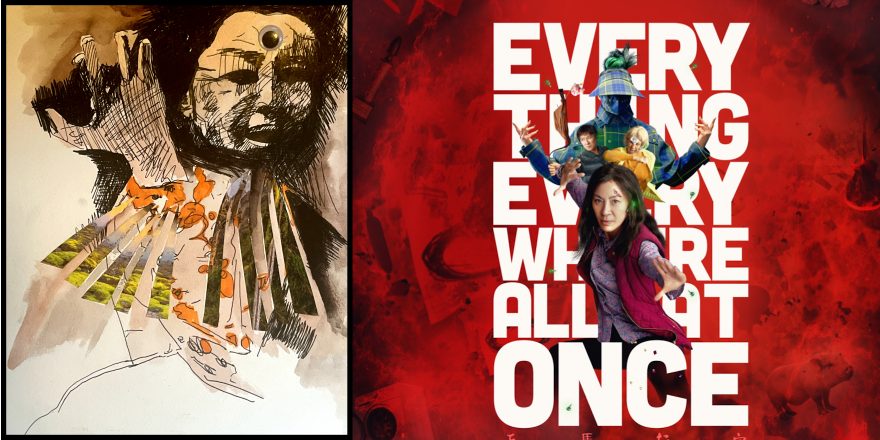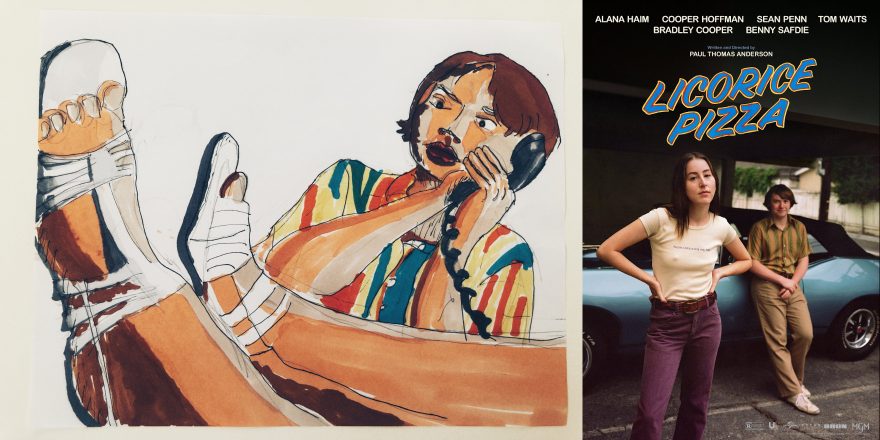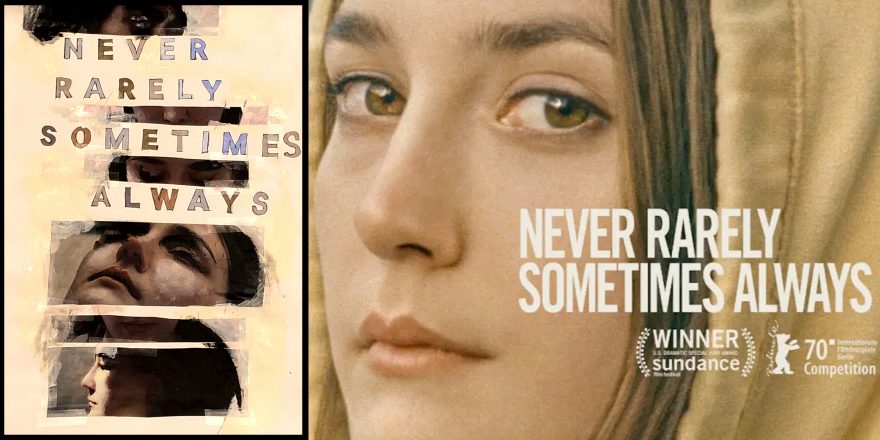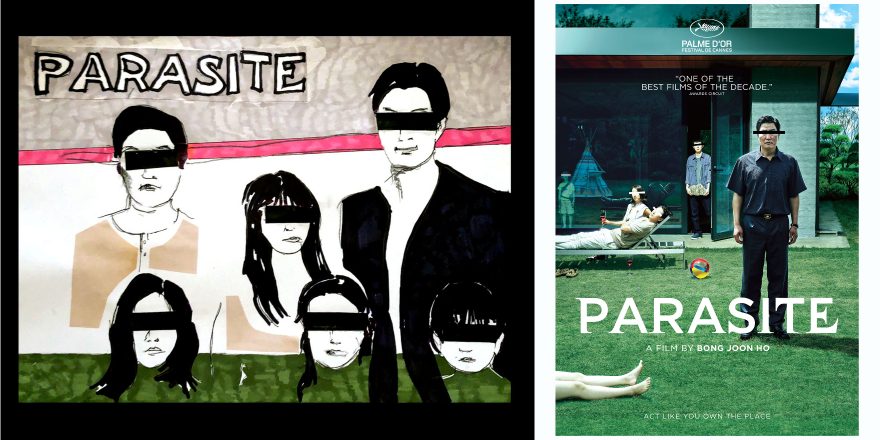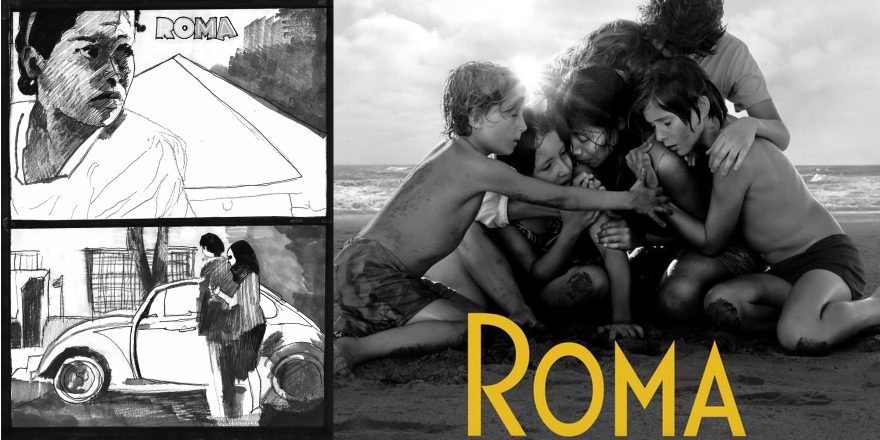Talkhouse Film contributors and a select few friends of the site voted on their favorite movies of 2022. The results of the Talkhouse Film poll are below, showing all the titles that received multiple votes; a selection of individual ballots will be posted tomorrow. Ten points were awarded to first-place films, 9 points were given to second place, etc.
Thanks to all who voted, and to the following contributors, whose wonderful written and graphic responses to the Top 10 films are featured below: Vashti Anderson, Rodney Ascher, Nikole Beckwith, Bernardo Britto, Zach Clark, Joe Dante, Megan Griffiths, Chad Hartigan, Gillian Wallace Horvat, Alix Lambert, Alison Star Locke, James Marsh, Ryan McGlade, Kent Osborne, James Ponsoldt, Dash Shaw, Leah Shore, Sandi Tan, Colleen Trundy, Onur Tukel and Stephen Winter.
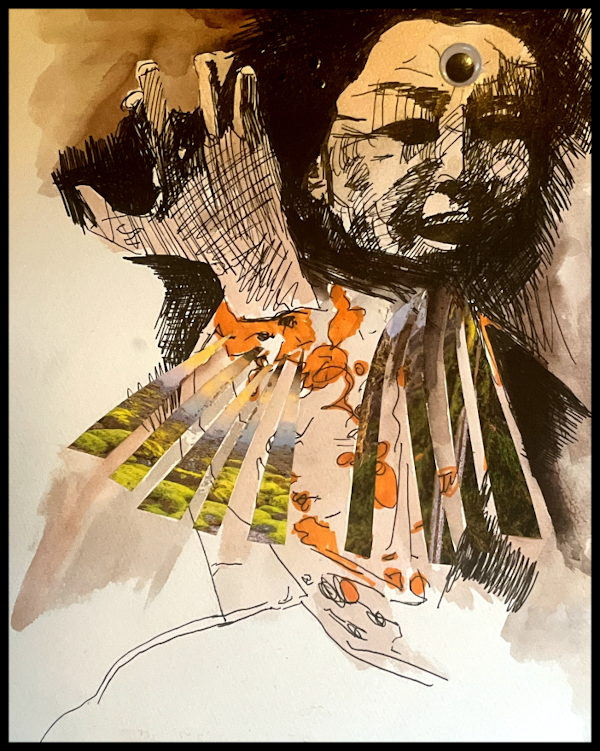
1. Everything Everywhere All At Once 261
Is Everything Everywhere All At Once a love letter to parental sacrifice, or to spouses who support each other through good times and bad, or to children who mystify their parents while becoming a version of their parents, or to choosing hope when evidence might suggest that the chaos-machine Everything (bagel) floating above our heads reveals that entropy is the natural direction of the universe?
Yes, yes, yes, yes.
Daniel Kwan and Daniel Scheinert – the Daniels – wrote and directed a prismatic home-movie about the entanglement of family and the weight of a life buckling beneath unmade choices. The film has a large, forgiving heart towards its characters – really, towards anyone who has ever felt like an Evelyn, a Waymond, or a Joy – and urges viewers to laugh at meaninglessness and love harder, now, please.
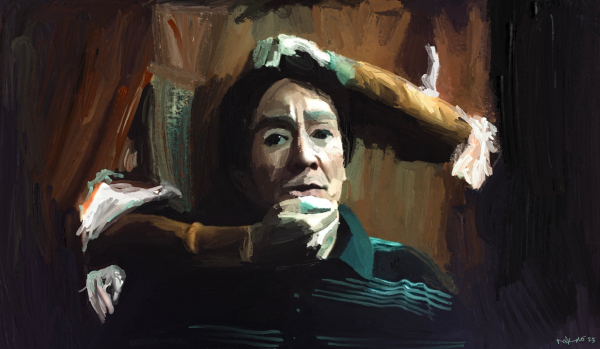
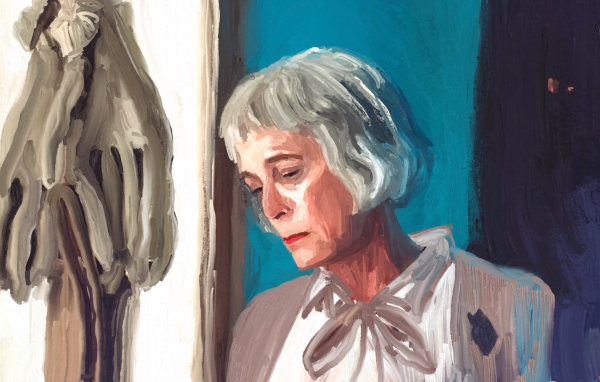

Everything All At Once is an action movie that demands to be seen on the big screen while also existing in the skull theater of an ADHD brain. The film feels like an inevitability of all the shit we’ve gone through together the past few years. But really, the schizophrenic tugging of the narrative asks a larger question:
Now that this insanity is our world, who will win the battle of heart and mind?
Oh, and Michelle Yeoh is a goddess. We already know this, but it can’t be repeated enough. She’s spent a career doing stunts none of us could imagine. In this beautiful film, she gets to be all of us. (James Ponsoldt)
Images by Alix Lambert (top) and Nikole Beckwith (inline)
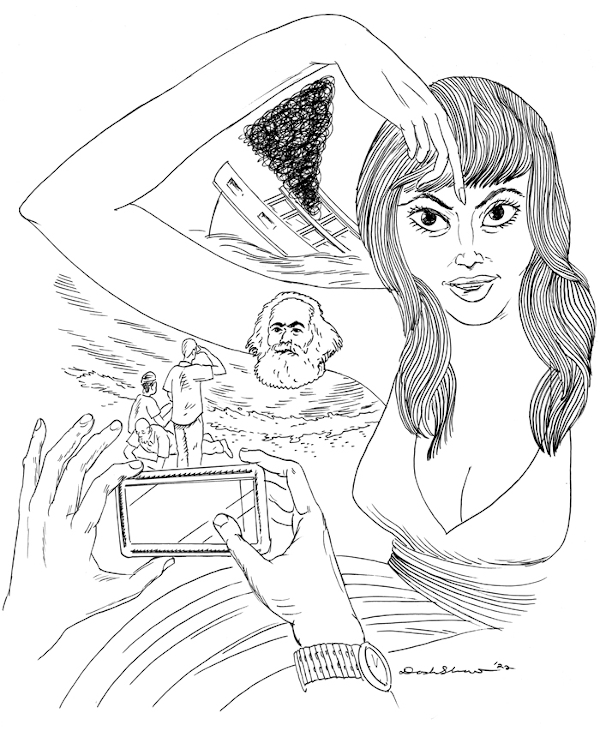
2. Triangle of Sadness 243
In my heart, I knew the ending of Triangle of Sadness, but I relished in the experience of getting there. This is something that the director, Ruben Östlund talks about; he likes to publicly give away the endings to his films before they even come out. At the start, the “triangle of sadness” is an expression for the space between one’s eyebrows, the exhibition of one’s sadness that is, of course, repulsive and off-putting. Later, it means something far less superficial: we all are trapped in a triangle of sadness. Östlund makes a philosophical and historical commentary all while creating basic, painfully and hilariously relatable moments that expose the absurd and terrifying realities that human beings create for ourselves. A cringe-inducing spat over a restaurant check between a model boyfriend and girlfriend becomes a theme, masterfully elaborated upon, as the characters, joined by others, move through the story. There are different microcosms for “the world”: a modeling casting call, a restaurant, a cruise, and an island. One of my favorites: during the captain’s dinner, which turns into an all-out barf- (and shit-) orama, a bejeweled character, mouth full of vomit, demands “more champagne!” as the world is falling apart around her. “More champagne!” Wonderfully grotesque. Can’t stop thinking about that line and the delivery of it. I have to admit, that sequence played upon my pre-existing repugnance for cruises. Throughout the film, I kept thinking, “Where is this gonna go?” but when the next thing happened, I thought, “Of course that happened! What else could have happened? Who else could have shown up in that moment, besides a beach vendor with a language barrier?” Each beat felt unpredictable and at the same time inevitable. Nothing is out of nowhere, in fact, it’s all there, it’s just so intelligently implanted and interwoven. What a Christmas movie. Instead of the much-memed “big-city girl in high heels returns to her hometown and learns the real meaning of Christmas,” Östlund makes us think about how the hoarding of wealth brings neither happiness nor fulfillment nor dignity, cowardice too often prevails, and race and class divisions are deepened from the lies we tell to preserve our sense of belonging. (Vashti Anderson)
Image by Dash Shaw

3. TÁR 207
In interviews, star Cate Blanchett has repeatedly described TÁR as a “rehearsal film,” and I think that definition is the key to unlocking the central puzzle in a film packed with beguiling/frustrating riddles, jokes and echoes. One sits through almost all of TÁR’s two-hour 35-minute runtime without our hero Lydia Tár (Blanchett) getting the culminating triumph of actually conducting the Mahler 5. This sleight-of-hand by auteur Todd Field works in a similar way to Kubrick’s Eyes Wide Shut’s covert identity as a two-hour 45-minute epic of edging starring a very famous couple. These are dark, smiling denials. Indeed Tár never gets to conduct any orchestra for an audience until the final minute of the film, and it’s not what we think … in a myriad of ways. The ending of TÁR has spawned spontaneous public outcries of “WTF?”, Reddit threads, and, most famously maybe, it has been tarred (heh) as “the most racist shit I’ve ever seen” by at least one very smart critic. I, too, was flummoxed by the ending on first viewing, momentarily forgetting that Ewan McGregor gets run over in the final shot of Polanski’s excellent The Ghost Writer and that Phantom Thread ends on a poisoning and a jarringly upbeat “or was it?” coda. Taken at face value, Lydia Tár’s acceptance of a conductorship in an ambiguous Southeast Asian backwater (ostensibly Philippines-ish, but peopled with Thais) is a precipitous “comeuppance,” a fate-worse-than-death dreamed up by a basement-dwelling incel deep in the bowels of iced-over Ohio. But this is too much of a cheap shot for a guy like Todd Field, who takes great care in his world-building – have you seen the deadpan Deutsche Grammophon release of the film’s soundtrack album?? Do you actually think Field would upend his carefully embedded cards (the lurking flame-haired ghost, the labyrinth motif, the accordion motif, the multiple winks to Tarkovsky’s Nostalghia, etc. etc.) for the sake of a smarmy chuckle?
TÁR’s ending is its biggest Rorschach blot test, just as that earlier, bravura single-shot Juilliard sequence had been one, too. Right before she gets to Asia, Lydia Tár watches an old VCR recording of her idol, Leonard Bernstein, in her Staten Island childhood bedroom. I now view that moment as a life-altering reset. We’ve been let in on her hidden origins; she’s no longer cocooned. The next section begins with no preamble at a Southeast Asian train platform, followed by her opening a window and letting the sounds of the world in. There’s nothing that suggests condescension or self-pity in her interactions with the locals. If you read her behavior as comically grandiose, especially when she’s studying a score in a ramshackle outdoor cafe, well, that’s up to you. She puts her acute hearing to good use in her new environment. She actually listens. On a river boat, she takes in what her local guide says in a mumbly throwaway line about crocodiles that had escaped from “a Marlon Brando movie” long ago: “They survive.” We see a creeping recognition on Tár’s face – no longer the Berlin mask she danced in, but something softened by the tropics: she’s a crocodile, too. I mean, she was once Linda Tarr, provincial Spelling Bee champ, who later made (and changed) her name collecting field recordings of a remote tribe in the Amazon. It makes (accordion) sense that she’d return to the humid embrace of the tropics. [And, by the way, those prescription pills she repeatedly steals from her partner Sharon (Nina Hoss) are Metropolol Tartrate, taken to slow down and regulate one’s heartbeats, rather like a medicinal metronome; when she’s at the unnamed Southeast Asian backwater, she finally frees herself of her Sharon dependence by getting her own damn prescription. For just “10 dollars.” (That’s funny, too.)] I couldn’t help but think that if Field had wanted to go for verisimilitude, he might have landed Ms. Tár a new gilded cage in one of the oil-rich Gulf states instead, and we’d have the fun of watching her learn the new rules of engagement in a mandatory headscarf. But no, the maestro is playing a slyer game. Either way, you can dig a grave for Lydia Tár, but she isn’t done. She may just be getting started again, as the final VO suggests. Life is one big rehearsal, after all. And is that funny or sad? You’re a fool if you think we have to know. (Sandi Tan)
Image by Onur Tukel
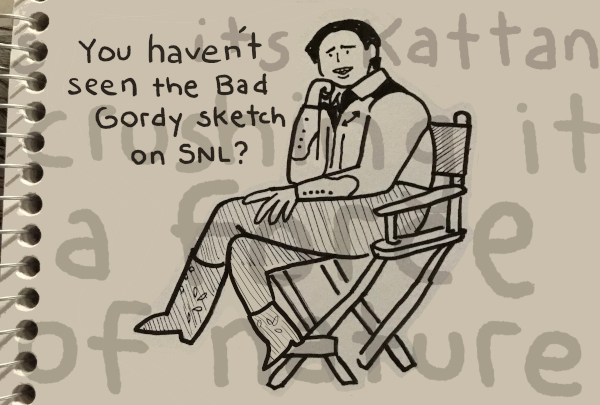
4. Nope 167
No film of 2022 sent me so far into a checkerboard of poignant and menacing thoughts as Jordan Peele’s Nope. From the first startling upright bloody shoe, the confident staccato rule-breaking and hypnotic mind bends of Nope burns me like Close Encounters of the Third Kind did when I was a kid. Its propulsion of ideas lands square on your head and unfurls, great and terrible, like the fantastic, near-ecclesiastical wings upon wings of the creature’s climax. Yet Nope also soothes the soul. The special fidelity between Black siblings has rarely been depicted so well. The commitment between stoic, sturdy O.J. (Daniel Kaluuya, never better) and his gutsy sister Emerald (Keke Palmer) is both private and primordial – they are going to get that Oprah shot and make a real difference with their Black lives. Plus Nope has depths of rewarding detail. The haunting immobile cloud, like a stone in the sky. The lustrous, swoon-worthy day-for-night cinematography of the California backcountry. The Muybridge of it all. The ride-or-die bond between Emerald and spunky Angel (Brandon Perea) during that dreadful blood-and-guts rain. The “Sunglasses at Night” slow-motion chase! And the Shakespearean tragedy of Ricky “Jupe” Park (Steven Yuen), whose fundamental, colossal misunderstanding of his childhood trauma gave him a calculated celebrity-driven narcissism that led to a perfect punishment: to be taken, flown up and slowly consumed while sailing to and fro over the lovely prairie you call home. You’re awake enough to scream. Awake to see your fellow travelers suffer, knowing your folly brought them there. While dying in the shiny belly of the airborne beast, does Jupe get to hug his former TV child co-star Nessie (Barbie Ferreira) before the creature snuffs them both? Oh, oh. Oh. Jupe.
Chilling stuff. But Nope concludes triumphantly because we focus fully with Keke Palmer’s vivid, ambitious, ravishingly self-assured Emerald (as in “Emerald City”!). Palmer’s talent is so singular and awesome. She’s Harrison Ford and she’s the Raiders of the Lost Ark whip. She’s Bette Davis’ throaty laugh and Josephine Baker’s sweet, agile grace. She’s the shower strings in Psycho. She is Diana Sands. And much more that’s all hers and bracingly new. Keke Palmer is the cinema life force. (Stephen Winter)
Image by Kent Osborne

5. The Banshees of Inisherin 120
The Banshees of Inisherin is, on its face, about the end of a friendship. Colm (Brendan Gleeson) decides one day that spending time with Pádraic (Colin Farrell) is preventing him from having any lasting impact in the world, so he cuts Pádraic off completely in order to focus on writing a fiddle tune that will stand the test of time. The plot unfolds around Pádraic trying to get Colm to drop this nonsense and Colm going to very extreme lengths to prove his commitment to never dropping the nonsense.
This film has many charms, with its droll, brogue-y banter, beautiful scenic setting and exceptional performances (Kerry Condon and Barry Keoghan are also damn good), but The Banshees of Inisherin, this simple tale of an abruptly severed relationship (among other severed things), ultimately transcends the surface enjoyment of a story well told. There is a larger point, echoed in the muted sounds of the Irish civil war heard across the water from the film’s lonely island, about the general futility of these conflicts, large and small. The film lays bare the truth that when we engage in battle with others, we often injure ourselves most egregiously, entrenching in our grudges and letting ideology eclipse discourse, barbarism replace humanity. And like Colm and Pádraic, we may ultimately emerge much the worse for our trouble — scarred, embittered, and having won nothing at all. (Megan Griffiths)
Image by Ryan McGlade
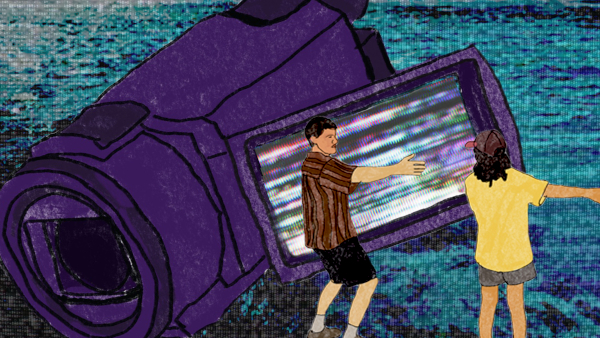
6. Aftersun 113
As the credits rolled on Charlotte Well’s debut feature, I decided that I wanted to see it again. Like again, straight away, if possible. Because it was only at the end of the film that I fully appreciated the film I was watching. On the surface, it’s a really simple story – a divorced, young father takes his estranged 12-year-old daughter on a cheap holiday in the sun. Amidst the well-observed details of the British on such vacations and the limited, cheap diversions they offer, the father and daughter seem to get along pretty well and nothing especially exciting or dramatic happens.
So why did the film leave me with such a profound sense of sadness, longing and regret along with the strong desire to return to these beautifully observed characters and spend time with them all over again?
Maybe because the film is predicated on the same notion. It commemorates a time that can never be re-lived between this father with his private, unknowable anguish and his growing daughter with her private, emerging desires. And we sense that the father’s future is uncertain, he looks both wounded and doomed. The daughter’s future we get to know in a framing device that adds another dimension to this simple story, recasting it into further complexity.
The film is properly nostalgic – it’s about the pain of memory as much as the consolation of remembering. It’s also beautiful to behold in its precise visual details, its evocative sound design and bold editing. See it once and see it again. (James Marsh)
Image by Colleen Trundy
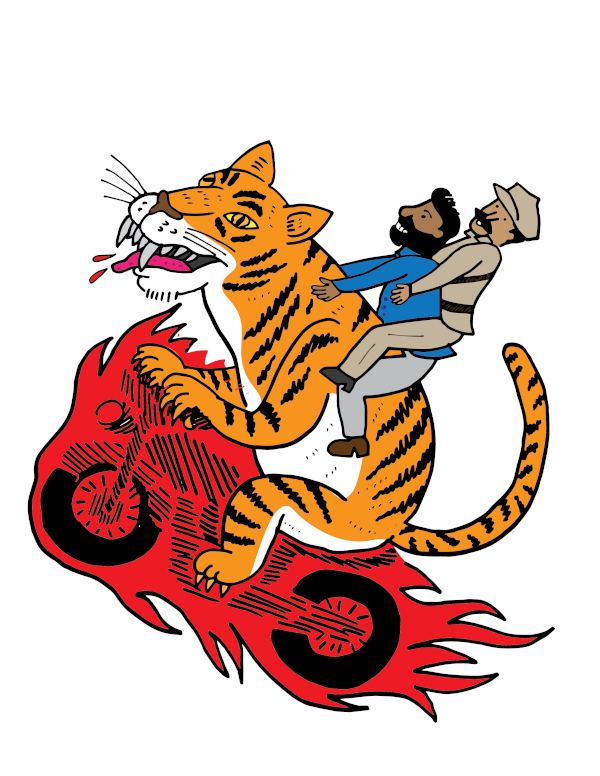
7. RRR 105
It’s not often that jaded movie fans are surprised by anything any more – we’ve seen it all.
Or at least we thought we had, until from seemingly out of the blue (via Netflix) came S.S. Rajamouli’s ferociously audacious RRR (“Rise Roar Revolt”), certainly the most dazzling Bollywood (actually Tollywood) spectacle in my experience.
The director, a passionate film buff who has guested on my podcast, credits Inglourious Basterds with freeing him from the straitjacket of history in his fanciful depiction of two actual Indian revolutionary adversaries who join forces to rescue a kidnapped child from the governor’s palace. Since Netflix is notorious for underselling (or not promoting at all) its foreign imports, RRR has reached its current popularity entirely through word of mouth as buzz spread through the Hollywood community, which led to well-deserved Big Screen theatrical bookings.
Because it’s really quite something – a ridiculously melodramatic and violent, often cartoony period CGI-fest that often recalls John Woo (among numerous other influences) but manages to remain continually enthralling over its action-packed three-hour running time, complete with the expected song (and protracted dance) interludes, a pulsing score and a brutal portrait of the horrors of British colonization. The menagerie escape scene alone qualifies it as one for the history books.
I don’t think there’s ever been anything quite like it. (Joe Dante)
Image by Zach Clark
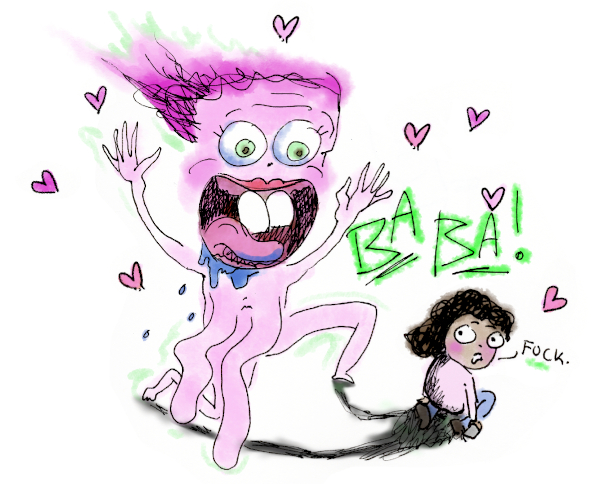
8. Barbarian 103
Zach Cregger and company pull off a magic trick in Barbarian, where we see the characters making huge mistakes but we forgive them because we’ve seen how diligent and smart they usually are. So often, that kind of thing has me screaming at the screen. But here, I was just as curious as they were, and this film is a constant surprise. The casting and nuanced performances play with your expectations every moment. Barbarian takes big swings with tone; it had me riveted and terrified and made me laugh. I kept nodding along with how well it mapped out the fears that women, especially women of color, have around safety and being believed, and that men have around trying to be a “good guy.” It’s so satisfying to see a man capture this with such sensitivity, and in a horror film. I was rooting for and scared of everyone in the film, guessing at who “the bad guy” was every step of the way. Every woman knows that tightrope of politeness you have to walk when you are alone with a man you’ve just met, and with this movie, that’s only the beginning. (Alison Star Locke)
Image by Leah Shore
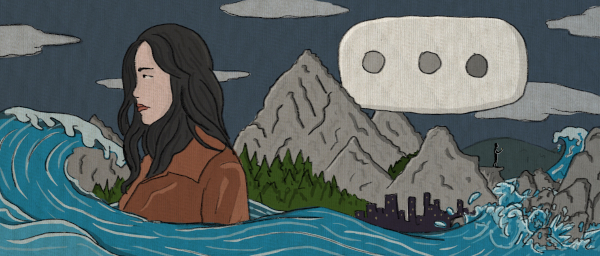
9. Decision to Leave 89
Within seconds of the lights going down in the theater and the studio logos passing, I was plunged headfirst into a police investigation with little regard to character introductions, backstory or setting the mood. It was the first indication that I was watching the work of a supremely confident director and there were to be hundreds more before the lights came back up. A fascinating mystery, a yearning romance, a propulsive thriller or a melancholy character study, depending on the scene (and sometimes all within a given scene), the quality I crave from a film these days more than any other is to be surprising and no other film gave it to me in more abundance than Decision to Leave. I truly never knew where I was being taken to next, but I was absolutely sure that I was being taken there by careful hands. Every scene contains some interesting camera work that compliments the action, but none more gasp-inducing than a bit of mixed focus in a standard two shot. It takes a master to use every tool at their disposal to make the simple seem extraordinary. (Chad Hartigan)
Image by Bernardo Britto
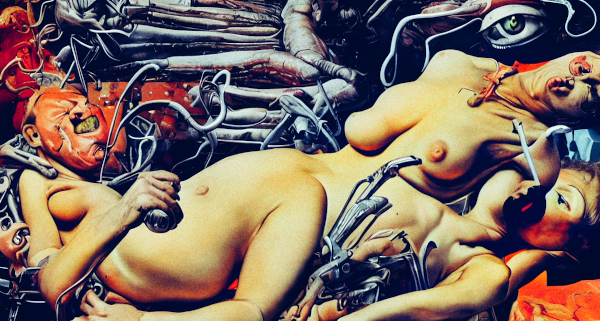
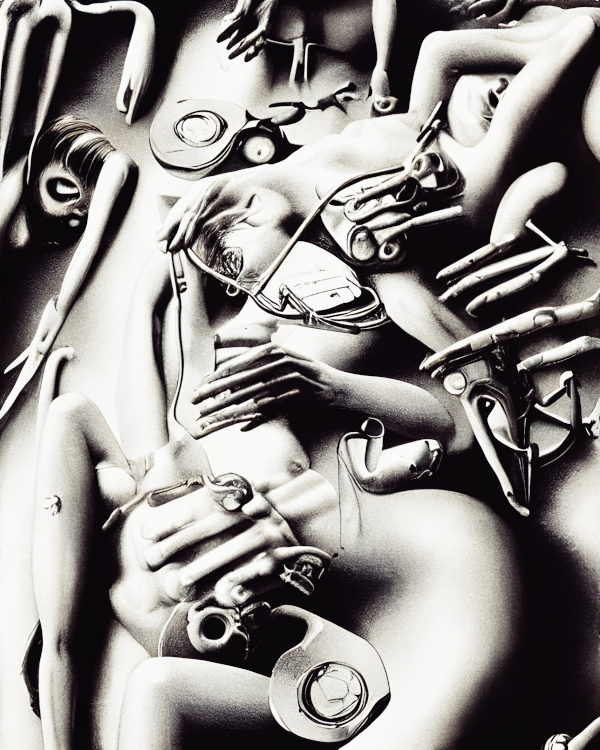

10. Crimes of the Future 88
I don’t know if you’re like me, but when one of my favorite living filmmakers comes out with a new movie, it takes me months to watch it, as I try to build up the courage to potentially come to terms with disappointment. Why I ever doubt David Cronenberg, I have no idea.
Crimes of the Future centers around Saul Tenser, a performance artist whose praxis involves the public excision and display of rogue organs developing in his body. Over time, we watch his health decline as the seemingly fatal growths outpace his spectacle-surgery schedule, ultimately resulting in a brilliant climax that looks to the future of the human race with hope and a mutable understanding of the definition of humanity.
I was diagnosed with a form of nerve damage in my early 20s; while I can manage it, there’s no cure. Malfunctioning nerves send my brain signals, making me feel pain unexpectedly and for no reason. The inexplicable attack coming from within my own body often makes me feel disassociated from it, just as Tenser felt at odds with his own rebellious innards. To see the logic and purpose that Cronenberg gives to Tenser’s transformation that equilibrates him again with his body was both a punch to the gut and a reawakening of hope that the traumas we experience within ourselves are the preparation for our next stage of evolution and for harmony with our suffering Earth. (Gillian Wallace Horvat)
Images by Rodney Ascher (using starryai)
11. X 85
12. The Fabelmans 79
=13. Bones and All 77
=13. Top Gun: Maverick 77
15. All the Beauty and the Bloodshed 70
16. Elvis 62
17. The Northman 61
18. EO 60
19. Fire of Love 59
20. Women Talking 54
21. Pearl 53
22. Memoria 51
23. Good Luck to You, Leo Grande 48
24. Jackass Forever 46
25. The Batman 43
26. Moonage Daydream 42
27. Pinocchio (Del Toro) 41
28. The Eternal Daughter 39
29. Petite Maman 36
30. Babylon 37
31. Athena 34
=32. Funny Pages 33
=32. Vortex 33
=32. Ambulance 32
=35. Bodies Bodies Bodies 32
=35. Saint Omer 32
37. Close 31
38. The Whale 29
39. Holy Spider 28
=40. Bardo 27
=40. Emily the Criminal 27
=40. The Worst Person in the World 27
43. She Said 26
44. Neptune Frost 24
=45. Licorice Pizza 23
=45. The Unbearable Weight of Massive Talent 23
=47. Bros 22
=47. Men 22
=47. Official Competition 22
=47. The Outfit 22
=47. The Woman King 22
=47. We’re All Going to the World’s Fair 22
=53. Glass Onion: A Knives Out Mystery 21
=53. Jethica 21
=53. Nothing Compares 21
=53. Stars at Noon 21
=53. Watcher 21
=58. Descendant 20
=58. Marcel the Shell with Shoes On 20
=60. All That Breathes 19
=60. Benediction 19
=60. Prey 19
=60. The Cathedral 19
=64. Fresh 18
=64. In Front of Your Face 18
=64. Smile 18
=64. Speak No Evil 18
=64. The Stranger 18
=69. A Night of Knowing Nothing 17
=69. Pleasure 17
=69. You Resemble Me 17
=72. Kimi 16
=72. Mrs Harris Goes to Paris 16
=74. Avatar: The Way of Water 15
=74. Catherine Called Birdy 15
=74. Happening 15
=74. Nanny 15
=74. Navalny 15
=74. The Janes 15
=74. The Menu 15
=74. The Munsters 15
=82. Armageddon Time 14
=82. Blonde 14
=82. The Quiet Girl 14
=82. The Rehearsal 14
=86. All Quiet on the Western Front 13
=86. The Inspection 13
=88. Cha Cha Real Smooth 12
=88. Dual 12
=88. Gangubai Kathiawadi 12
=88. Murina 12
=88. Potato Dreams of America 12
=88. Soft and Quiet 12
=88. The Beatles: Get Back 12
=88. Three Thousand Years of Longing 12
=88. Weird: The Al Yankovic Story 12
=97. Corsage 11
=97. De Humani Corporis Fabrica 11
=97. Dos Estaciones 11
=97. Sharp Stick 11
=101. Confess, Fletch 10
=101. Fire Island 10
=101. Paris, 13th District 10
=101. The Civil Dead 10
=105. A Chiara 9
=105. Black Panther: Wakanda Forever 9
=105. Emily 9
=105. The Innocents 9
=105. Turning Red 9
=110. Good Night Oppy 8
=110. Mad God 8
=110. Retrograde 8
=110. Riotsville USA 8
=110. White Noise 8
=115. Both Sides of the Blade 7
=115. Bullet Train 7
=115. Earwig 7
=115. Our Father the Devil 7
=115. Resurrection 7
=115. The Black Phone 7
=121. The African Desperate 6
=121. The Last Movie Stars 6
=121. The Wonder 6
=121. Violent Night 6
=125. A Wounded Fawn 4
=125. Apollo 10½: A Space Age Childhood 4
=125. Causeway 4
=125. Don’t Worry Darling 4
=125. Louis Armstrong’s Black & Blues 4


